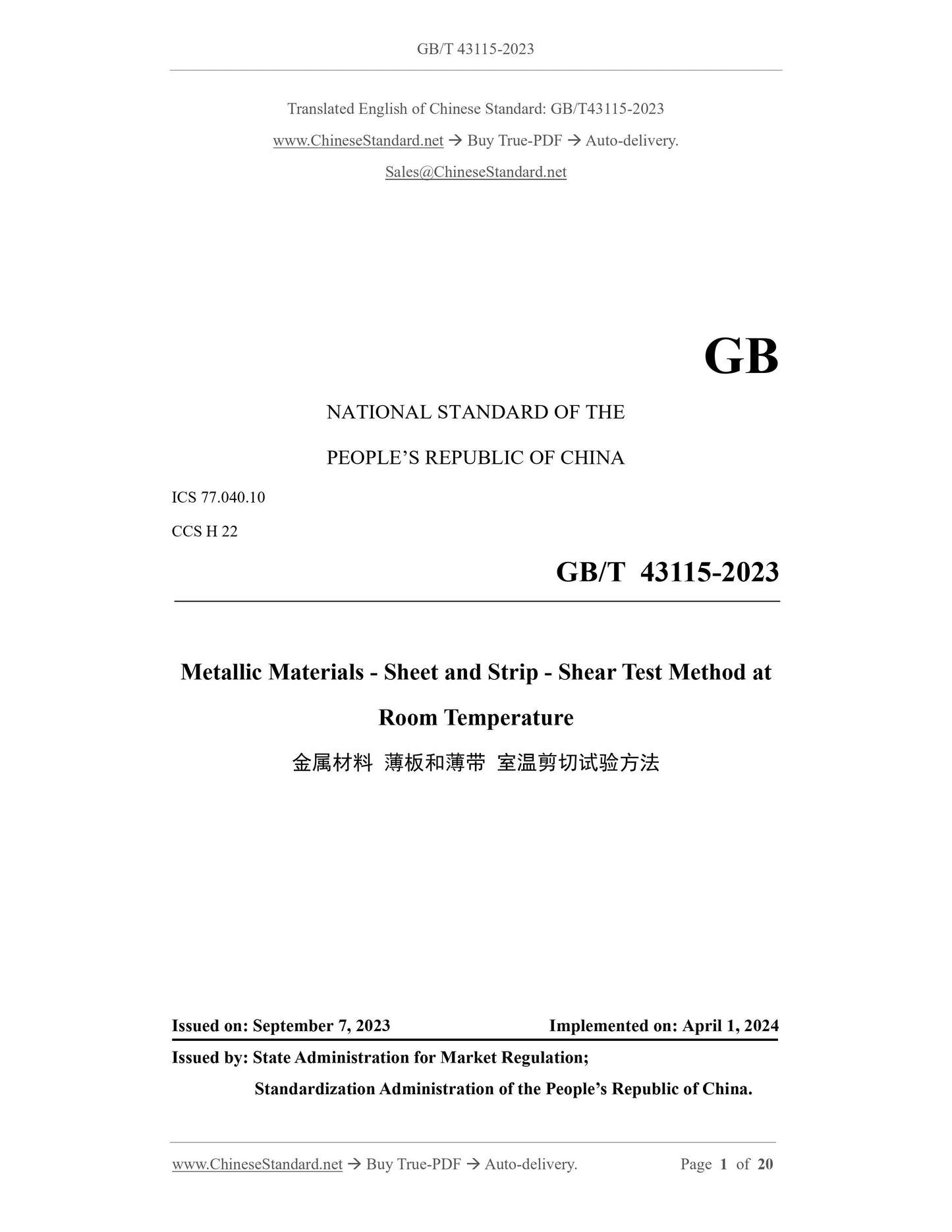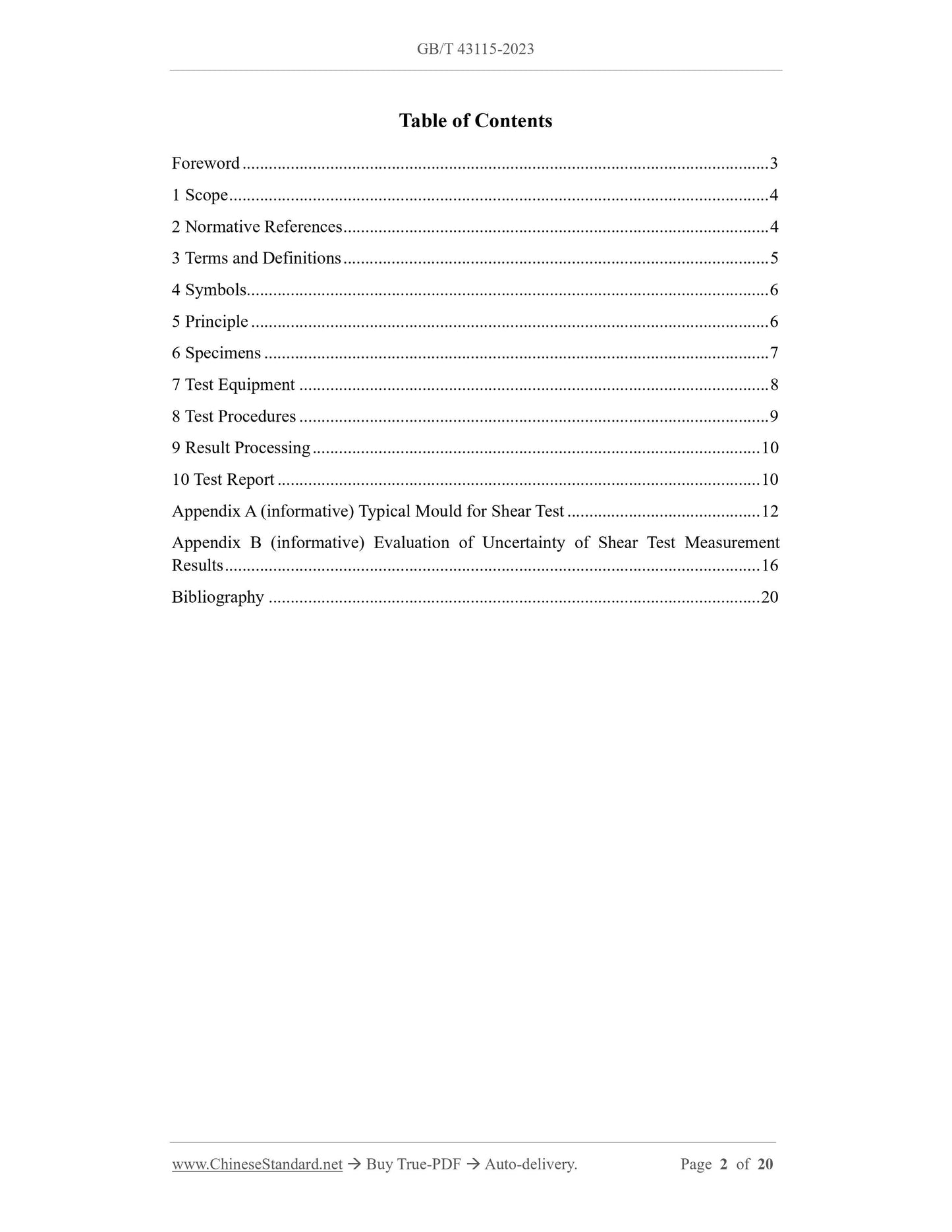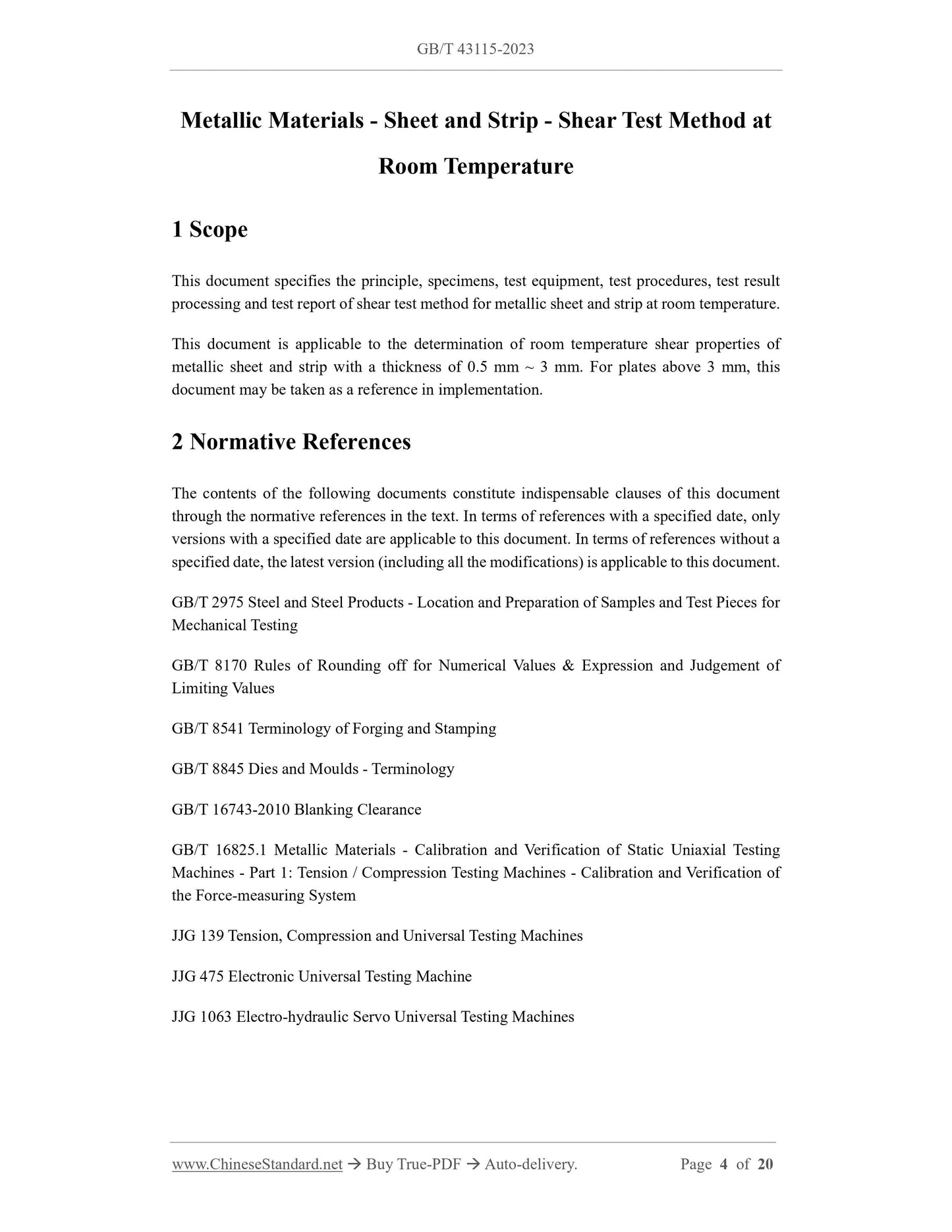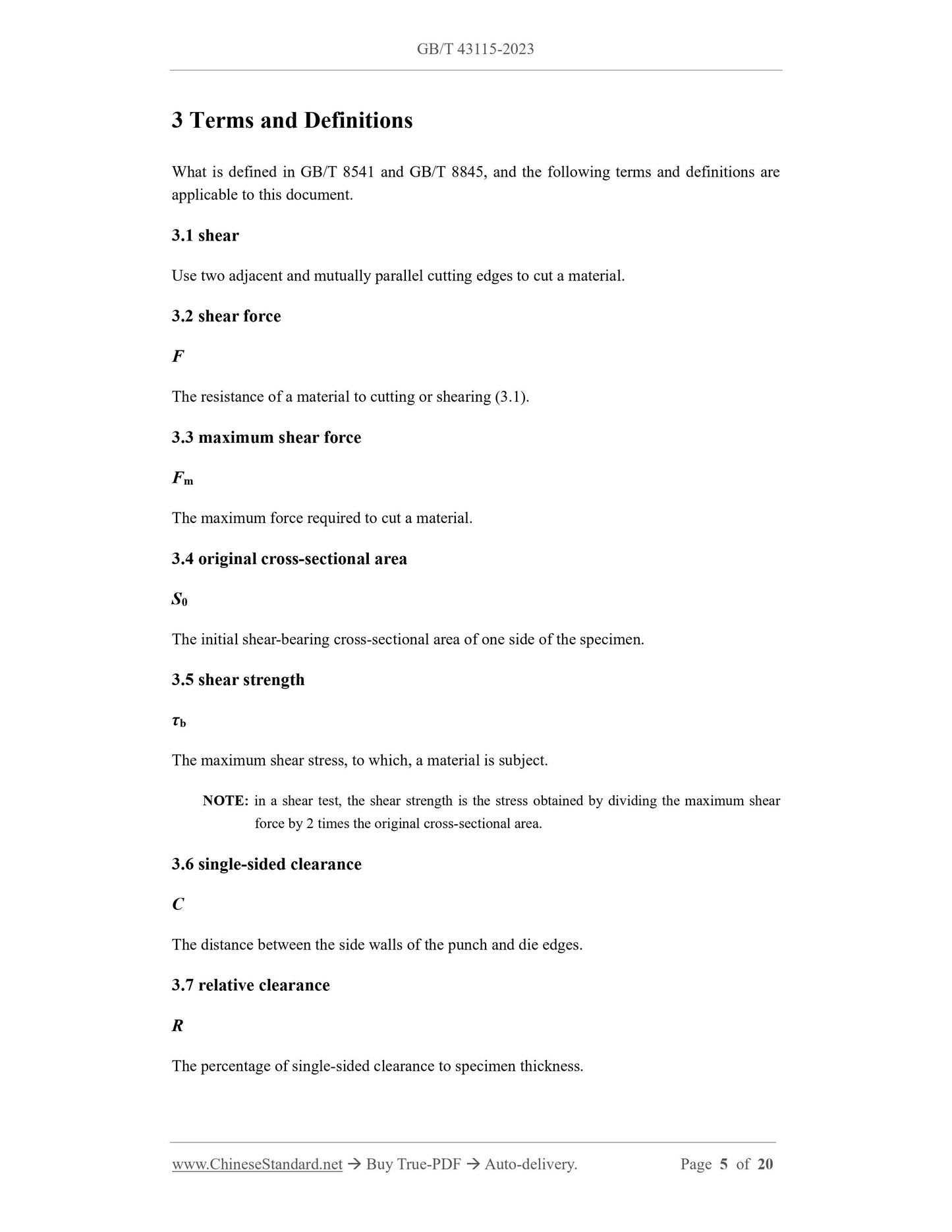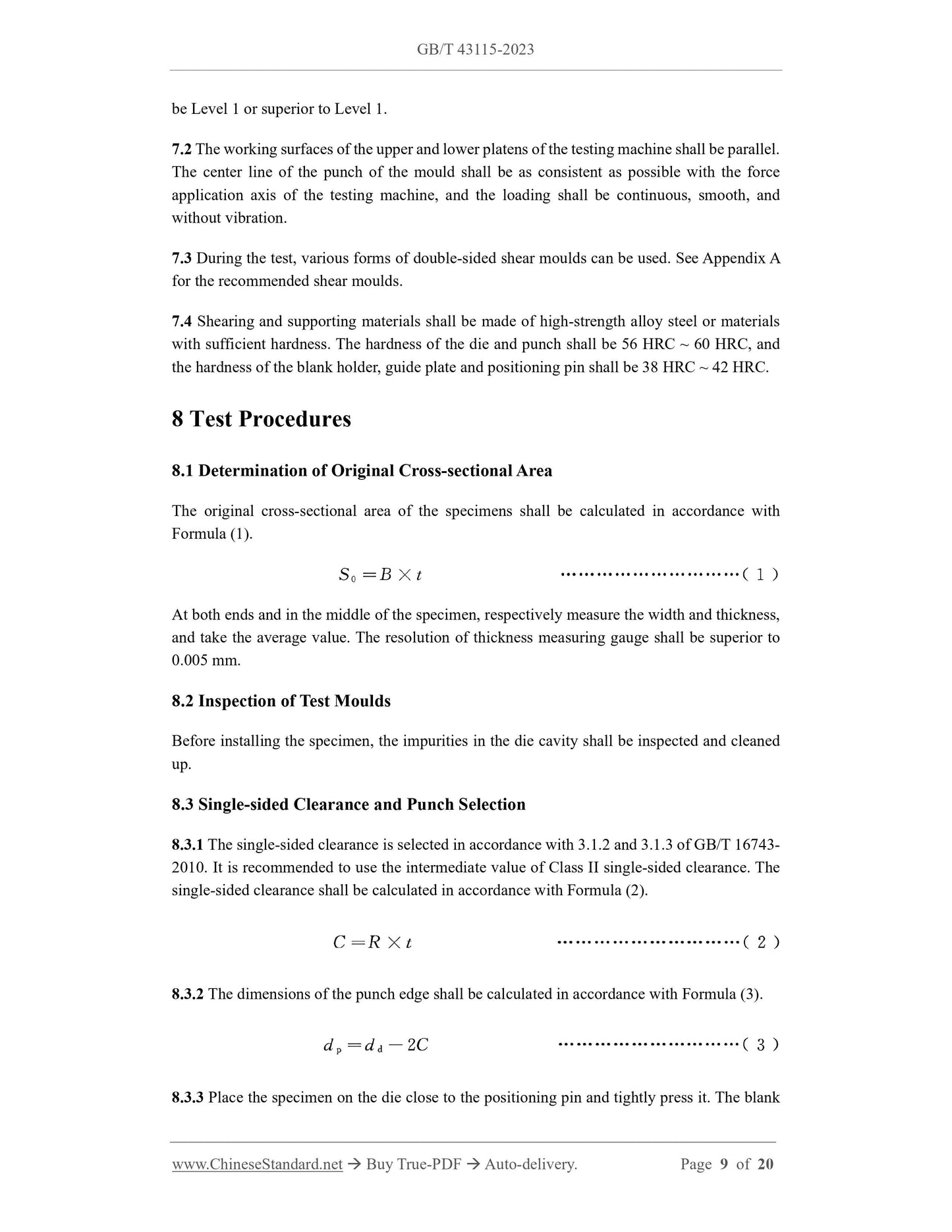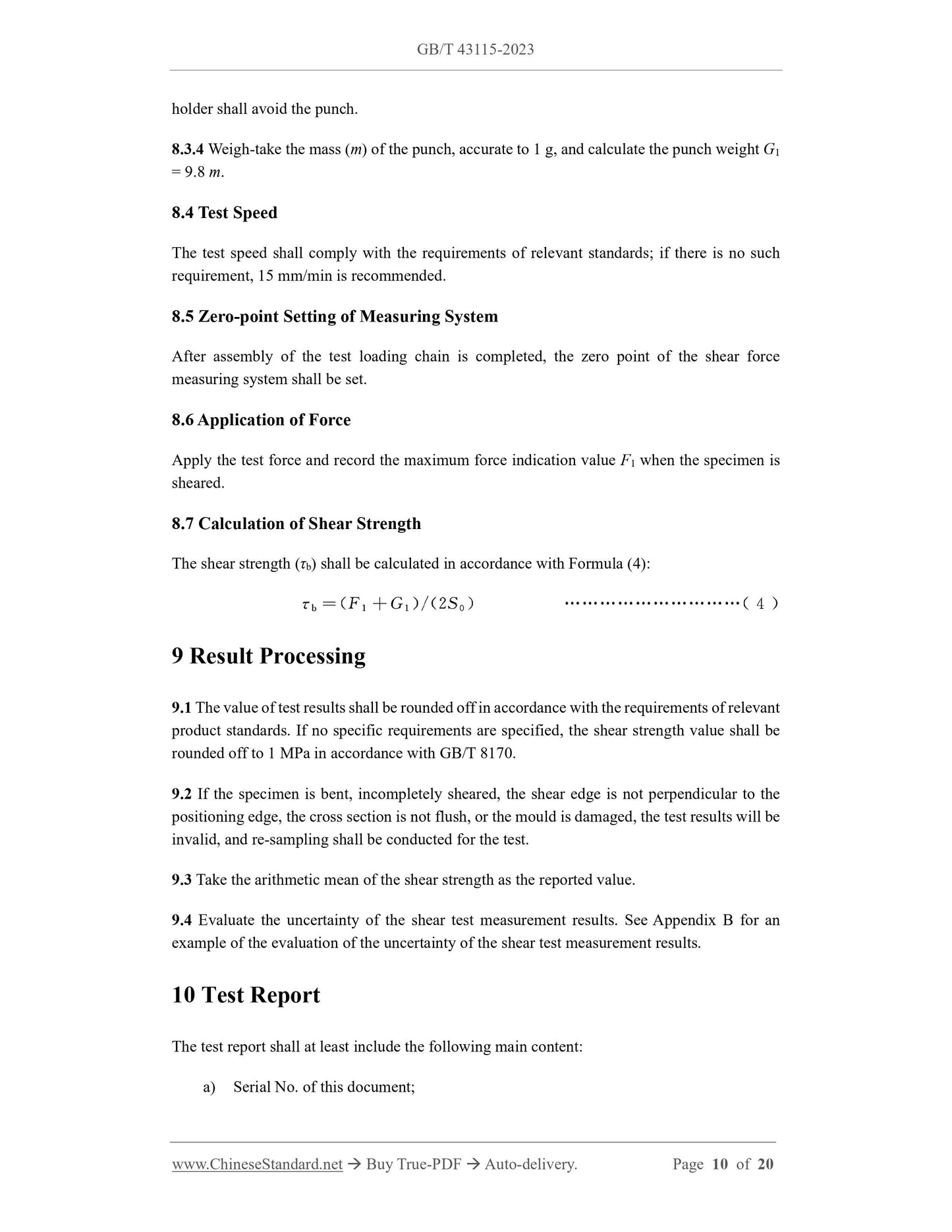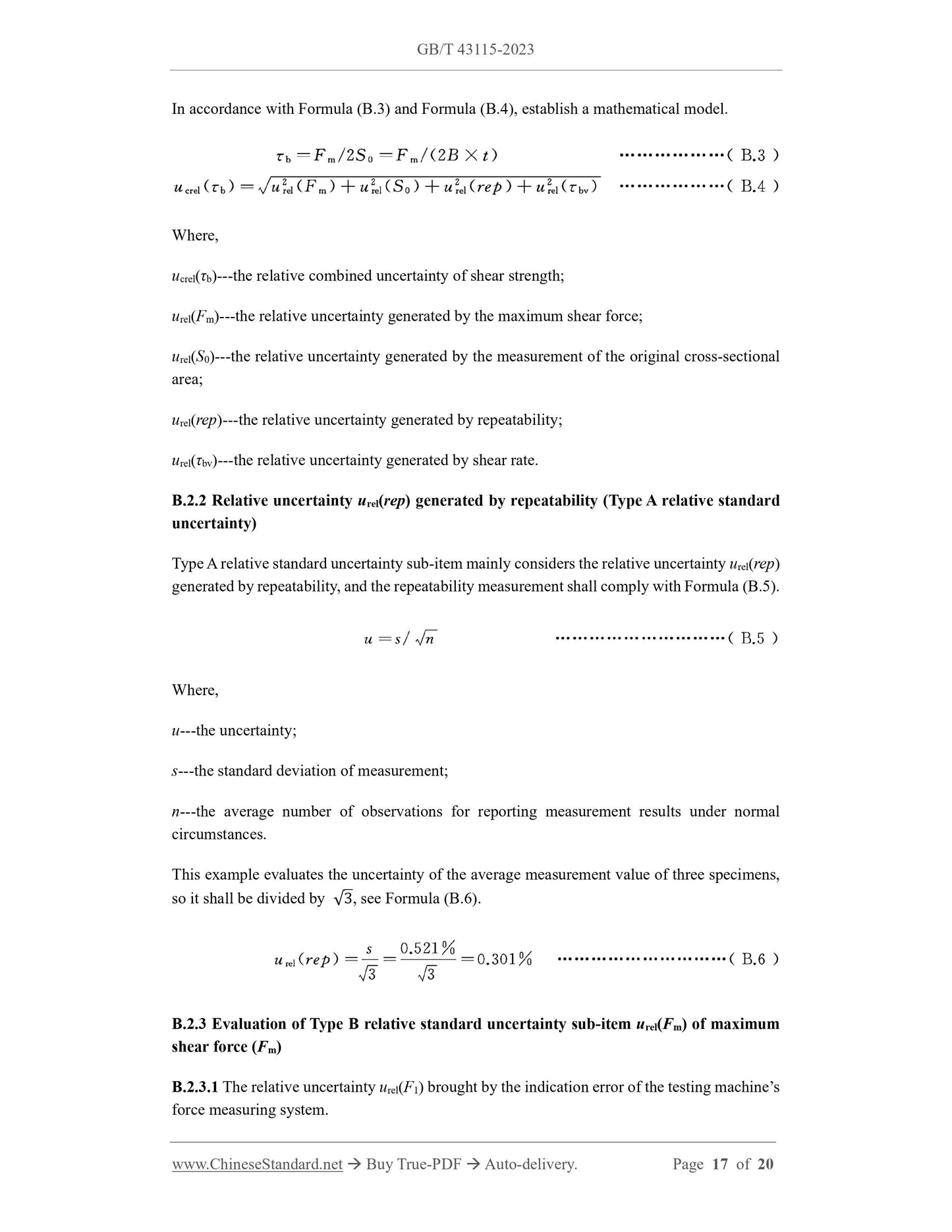1
/
of
7
www.ChineseStandard.us -- Field Test Asia Pte. Ltd.
GB/T 43115-2023 English PDF (GB/T43115-2023)
GB/T 43115-2023 English PDF (GB/T43115-2023)
Regular price
$325.00
Regular price
Sale price
$325.00
Unit price
/
per
Shipping calculated at checkout.
Couldn't load pickup availability
GB/T 43115-2023: Metallic materials - Sheet and strip - Shear test method at room temperature
Delivery: 9 seconds. Download (and Email) true-PDF + Invoice.Get Quotation: Click GB/T 43115-2023 (Self-service in 1-minute)
Newer / historical versions: GB/T 43115-2023
Preview True-PDF
Scope
This document specifies the principle, specimens, test equipment, test procedures, test resultprocessing and test report of shear test method for metallic sheet and strip at room temperature.
This document is applicable to the determination of room temperature shear properties of
metallic sheet and strip with a thickness of 0.5 mm ~ 3 mm. For plates above 3 mm, this
document may be taken as a reference in implementation.
Basic Data
| Standard ID | GB/T 43115-2023 (GB/T43115-2023) |
| Description (Translated English) | Metallic materials - Sheet and strip - Shear test method at room temperature |
| Sector / Industry | National Standard (Recommended) |
| Classification of Chinese Standard | H22 |
| Classification of International Standard | 77.040.10 |
| Word Count Estimation | 18,131 |
| Date of Issue | 2023-09-07 |
| Date of Implementation | 2024-04-01 |
| Issuing agency(ies) | State Administration for Market Regulation, China National Standardization Administration |
Share
